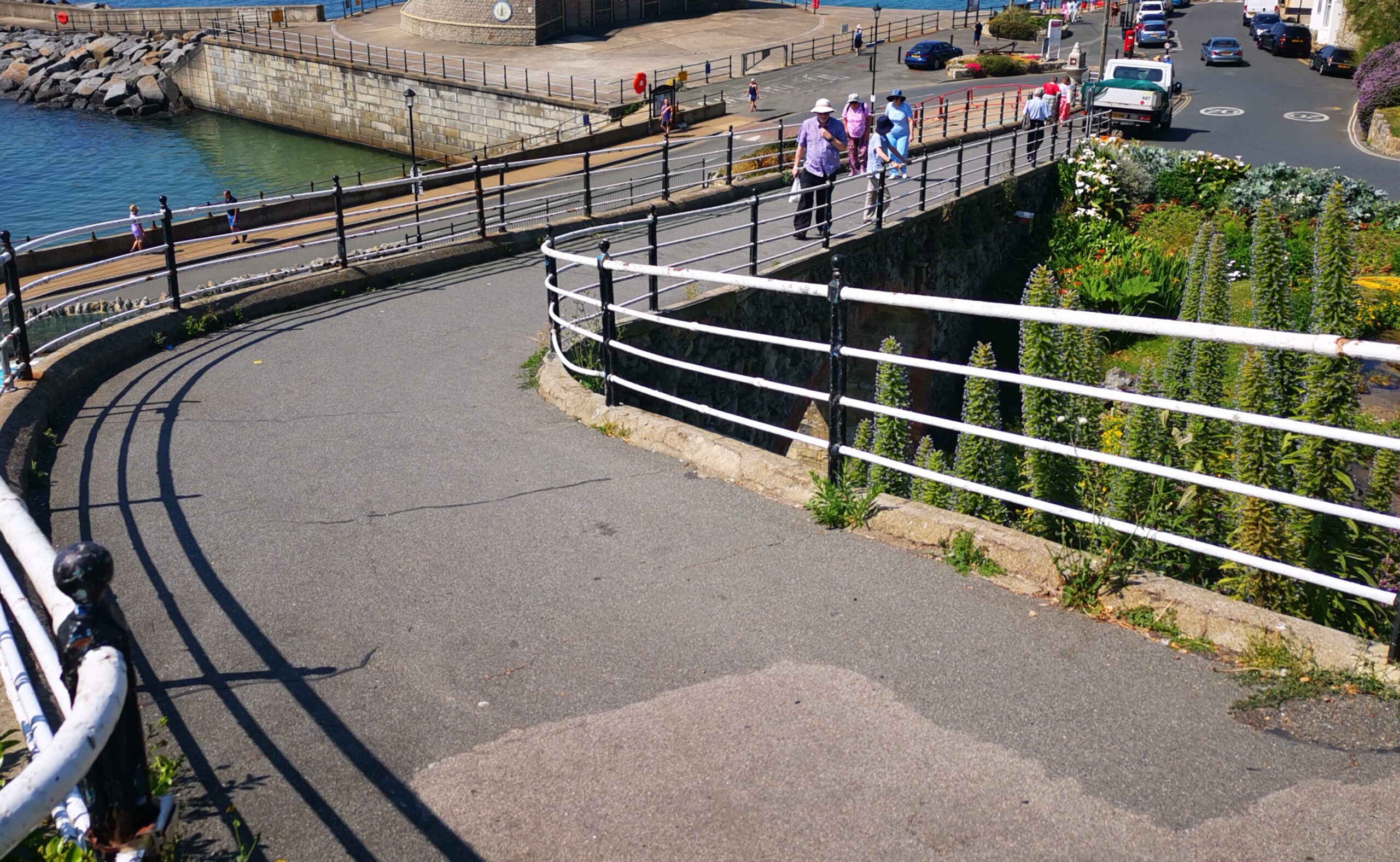
Ventnor Cascades project
Work to install new safety railings at Rene Howe Walk on Ventnor seafront will begin next month.
The project by Island Roads will see the installation of 140-metres of railings that respect the Victorian character of the seafront and meet current safety standards.
The walkway will also be resurfaced as part of the project which is due to begin on September 4 2023 and last approximately 27 weeks.
The Cascades will remain open to traffic at all times, although for two periods during the work temporary traffic signals will be required as the work also involves significant excavation of the existing kerbing and footway.
In order for us to undertake the work as safely and as quickly as possible, it will be necessary to close the footway to pedestrians for the duration of the scheme. There will be maps showing the routes available to and from the seafront.
Rene Howe Walk is within a conservation area and so we have liaised closely with the Isle of Wight Council’s Conservation Officer to ensure the new railings and bollards are in keeping with the local character of the area.
The new railings will be vertical as opposed to the current horizontal style as vertical railings are compliant with the required safety standards. They will also need to be set in new concrete foundations which means we will have to excavate much of the current footway, and it is this element – plus the need to erect a lot of scaffolding – that means the project will take around 27 weeks.
The safety standards for highways structures which determine the design and, for example, whether or not it has vertical or horizontal railings, take into account a range of different factors, including for example:
In one area therefore where the drop to the ground is low and it has a low volume of people using it, a structure may be able to use horizontal railings, whereas in this case, the drop to the ground is significant and the route is well used by pedestrians and therefore a vertical railing system is required to ensure people can be kept safe when using the structure.
These standards also only apply to highway areas and do not apply to areas within private ownership.
We have sought to undertake the work outside of the main summer season but using as many weeks as possible before the winter months when work is more likely to be affected by lower temperatures, particularly in this exposed coastal location, as well as shorter daylight hours.
More information:
You can view an artist’s impression of the new parapet (railings) here.
You can read a presentation given to the local community here.
You can view a map of alternative routes to take during work here


